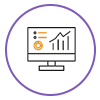4 Simple Steps for Migrating to
Databrick with zero coding


Create connections
between data
sources and Databrick


Prepare a source to the Databrick pipeline by selecting tables in bulk


Assemble a workflow and schedule it to start the Databrick migration process

Share your data
with third-party platforms
over API Hub

Integrate data from ERP, CRM, legacy databases, and other 300+ sources
Hear how Lyftrondata helped accelerate the data
journey of MOL Group
reporting
onboarded
reduction
sales
 Lyftrondata enables instant analytics on WNI weather data that helped us streamline shipping lines.
Lyftrondata enables instant analytics on WNI weather data that helped us streamline shipping lines. 

Koichi Tsuji
Consulting Partner at MOL Group
FAQs
What is Databrick?
A standard tool used by businesses to process and transform massive amounts of data and explore the data is called Databricks Integration. It is a cloud-based data engineering tool. Machine learning models are used to process and transform large amounts of data.
What are the features of Databrick?
What are the shortcomings of Databrick?
Lack of options: Databricks Drivers tool lack options for visualization and creation of dashboards.
Bad file management: Databricks Integration has a bad file management system and it is slow sometimes.
Hard to manage: Databricks Connectors tool is hard to manage a notebook workspace.
Extremely confusing: Databricks ETL software can be extremely confusing given the sheer breadth of tools available.
Start modernizing your Databrick journey today




